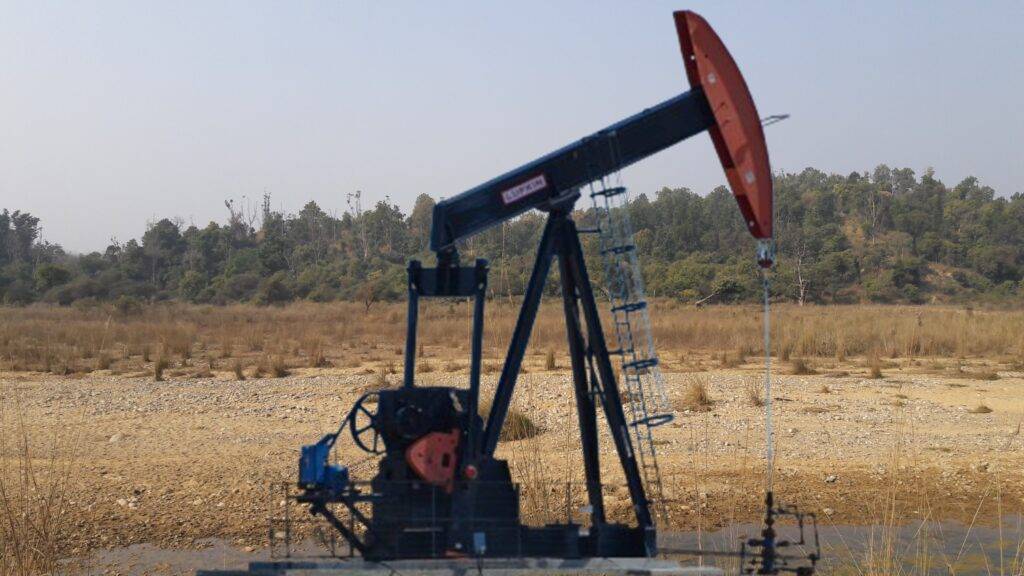
COMPETITIVE EXAM MCQs SERIES of ENVIRONMENTAL SCIENCE for UGC-NET/JRF, SLET, ARS, GATE, and other entrance tests – Energy and Environment: – Fossil Fuels and Environmental Costs.
Syllabus Outline
- Environmental costs associated with fossil fuel extraction, processing, and consumption.
- Global distribution, reserves, and production trends of fossil fuels (e.g. coal, oil, and natural gas).
- Environmental impacts of fossil fuel extraction (e.g. habitat destruction, water pollution, and land degradation).
- Emissions of greenhouse gases and climate change.
- Socio-economic implications of fossil fuel dependency and alternative energy sources and technologies.
- Policy frameworks, international agreements, and transition strategies to a more sustainable energy future.
This quiz contains the concept-based most frequently asked 25 MCQs of “Energy and Environment – Fossil Fuels and Environmental Costs“. Each question has a single correct/most appropriate answer.
*****
1. What is the process by which coal is heated in the absence of oxygen to produce coke, a fuel used in blast furnaces for iron smelting?
a) Carbonization
b) Pyrolysis
c) Gasification
d) Liquefaction
2. Which of the following continents holds the largest reserves of coal?
a) South America
b) Asia
c) Europe
d) North America
3. Which fossil fuel is typically found in tar sands?
a) Petroleum
b) Coal
c) Oil shale
d) Natural gas
4. Which type of coal has the highest carbon content and energy density?
a) Anthracite
b) Bituminous
c) Subbituminous
d) Lignite
5. Which region has the largest reserves of natural gas, making it a key player in global natural gas production trends?
a) Middle East
b) Europe
c) North America
d) Africa
6. Which of the following is a byproduct of burning coal that can contribute to respiratory problems?
a) Carbon dioxide
b) Sulfur dioxide
c) Oxygen
d) Nitrogen
7. What is the process of extracting oil from unconventional sources such as oil shale and tar sands?
a) Primary recovery
b) Tertiary recovery
c) Enhanced oil recovery
d) Secondary recovery
8. Which fossil fuel is primarily composed of kerogen?
a) Coal
b) Oil shale
c) Natural gas
d) Petroleum
9. Which air pollution is caused by a combination of nitrogen oxides and volatile organic compounds in the presence of sunlight?
a) Smog
b) Acid rain
c) Ozone depletion
d) Greenhouse effect
10. What is the main environmental impact of burning coal for electricity generation?
a) Coral reef bleaching
b) Deforestation
c) Groundwater contamination
d) Acid rain
11. In terms of oil reserves, which region holds the second-largest share after the Middle East, according to recent geological surveys?
a) Africa
b) Asia-Pacific
c) South America
d) North America
12. What is the primary environmental concern associated with the combustion of peat, a precursor to coal, often used as a fuel in some regions?
a) Ozone depletion
b) Acid rain
c) Soil erosion
d) Greenhouse gas emissions
13. Assertion (A): The extraction of fossil fuels often involves environmentally destructive techniques such as fracking and strip mining.
Reasoning (R): Fracking, a method used to extract natural gas from shale formations, can contaminate groundwater and induce seismic activity. Strip mining for coal removes entire layers of soil and rock, leading to habitat destruction and disruption of ecosystems.
a) Both the A and R are correct, but the R does not explain the A.
b) Both the A and R are correct, and the R explains the A.
c) The A is incorrect, but the R is correct.
d) The A is correct, but the R is incorrect.
14. Which of the following pollutants is released during coal combustion and contributes to the formation of ground-level ozone?
a) Carbon monoxide
b) Sulfur dioxide
c) Particulate matter
d) Nitrogen oxides
15. Considering production trends, which fossil fuel has shown the highest growth rate in recent years, driven by increasing demand from emerging economies?
a) Oil
b) Natural gas
c) Coal
d) Liquefied natural gas
16. Assertion (A): Fossil fuel extraction, processing, and consumption have significant environmental costs.
Reasoning (R): The combustion of fossil fuels releases greenhouse gases such as carbon dioxide, contributing to global warming and climate change. Additionally, extraction methods like mountaintop removal for coal mining and drilling for oil and gas can result in habitat destruction and soil erosion.
a) Both the A and R are correct, and the R explains the A.
b) The A is correct, but the R is incorrect.
c) Both the A and R are correct, but the R does not explain the A.
d) The A is incorrect, but the R is correct.
17. What is the name of the process by which oil and natural gas are naturally formed from organic matter over millions of years?
a) Crystallization
b) Fossilization
c) Desalination
d) Diagenesis
18. What is the primary environmental concern associated with the release of methane during coal mining operations?
a) Groundwater contamination
b) Greenhouse gas emissions
c) Soil erosion
d) Air pollution
19. What is the process by which organic material is converted into coal under high pressure and temperature?
a) Combustion
b) Carbonization
c) Oxidation
d) Fossilization
20. What is the primary environmental concern associated with coal ash disposal?
a) Air pollution
b) Soil erosion
c) Groundwater contamination
d) Coral reef bleaching
21. Which of the following countries is the largest producer of crude oil, contributing significantly to global production trends?
a) Saudi Arabia
b) China
c) United States
d) Russia
22. According to the U.S. Energy Information Administration, what percentage of global proved oil reserves is held by Organization of the Petroleum Exporting Countries members?
a) Nearly 90%
b) Approximately 40%
c) Approximately 60%
d) Approximately 80%
23. Which country is the largest producer of coal?
a) Russia
b) United States
c) India
d) China
24. What is the primary component of natural gas?
a) Butane
b) Ethane
c) Methane
d) Propane
25. What is the primary method to reduce the oil viscosity of oil sands during extraction?
a) In-situ combustion
b) Hydraulic fracturing
c) Open-pit mining
d) Steam Assisted Gravity Drainage
*****
Previous: Solar Energy and Environmental Resilience
Next: Shale Oil, Coal Bed Methane and Gas Hydrates
References
- Richard Heinberg (2018) The End of Fossil Fuels: And the Rise of Renewables, New Society Publishers, 2nd Edition.
- Michael E. Webber (2012) Thirst for Power: Energy, Water, and Human Survival, Yale University Press, 1st Edition.
- Vaclav Smil (2017) Energy and Civilization: A History, MIT Press, 2nd Edition.
- Richard Wolfson (2019) Energy, Environment, and Climate, W. W. Norton & Company, 3rd Edition.
- Daniel M. Kammen, Robert H. Socolow (2004) Energy and the Environment, Princeton University Press, 1st Edition.

